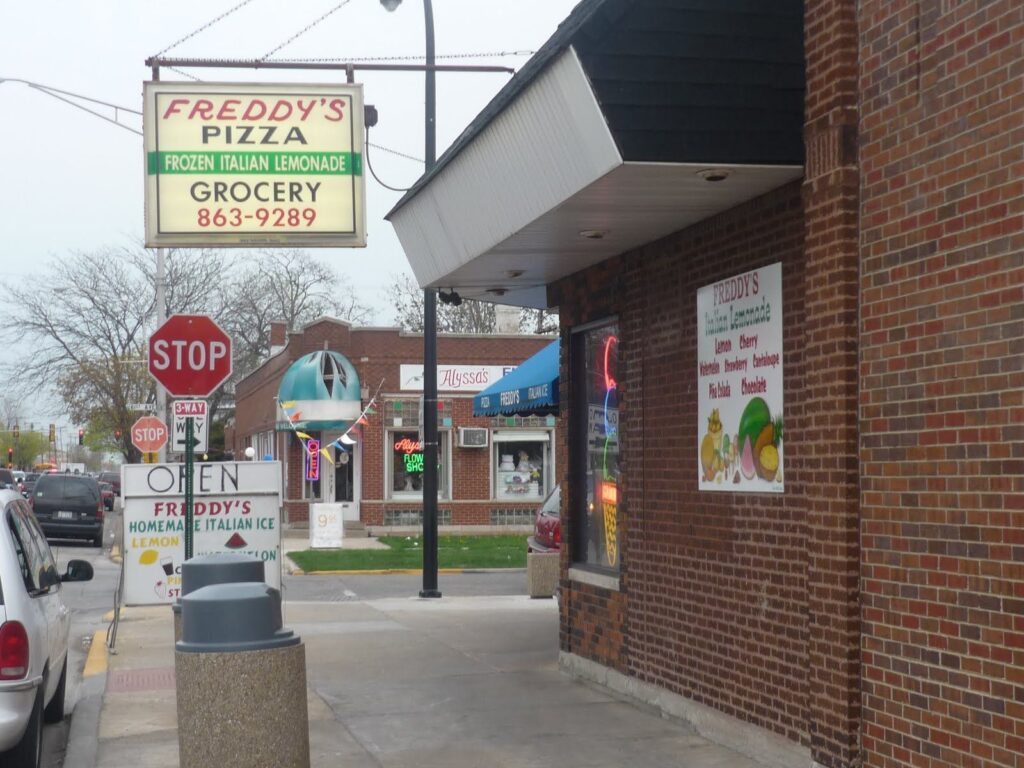“The land of Lincoln” and “The Prairie State” are some of the nicknames that describe the state of Illinois. Illinois is a midwestern state and a part of the rust belt. Illinois is famously known for the vast farmlands, forests, and wetlands. Aside from that, when folks think about Illinois they immediately think of Chicago and Springfield, but the land of Lincoln offers so much more. On Illinois Spotlight, we take a look around the Prairie State and highlight a city, town, suburb, or county to learn what makes each place in the state unique… giving the city of big shoulders a little rest from the spotlight. We kick things off first by making a stop to the town of Cicero.

Welcome to Cicero sign in the middle of Cermak Road.
Origin of Cicero
The town of Cicero is named after the Roman statesman and Orator, Marcus Tullius Cicero. The suburb of Cicero, about 8.5 miles west of Chicago, a town that was once manufacturing focal point and home to infamous mobster Al Capone. Around the 19th century, Cicero was originally a 36-square-mile tract that shadowed the city of Chicago in size. Cicero only retained about 6 miles of its original 36 miles.
This township was surrounded by what is today Western, North, and Harlem Avenues, and Pershing Road (Western Avenue was actually the western border of Chicago). In the late 1800s, a sequence of land annexations by the city of Chicago resulted in the town of Cicero being greatly reduced. In 1899, The Austin neighborhood was absorbed by the city. Berwyn and Oak Park each divided and became independent municipalities in 1901-1902.

The remnants of The Hawthorne Works building on Cermak Road and Cicero Ave.
Demographics of Cicero: Past and Present
In the mid-1800s, the railroad industry made the town of Cicero a regular stop, and the industry flourished in the community. Immigrants from parts of Eastern Europe came to the community in search of factory work, like finding work at Western Electric Company at Hawthorne Works. Several were from the Austro-Hungarian Empire (Bohemians and Slovaks), Poland, Lithuania, and Italy. Neighborhoods were somewhat bounded by ethnicity and not race, yet they remained socially segregated. According to the Encyclopedia of Chicago, the company’s 25,000 employees “supplied roughly 90 percent of all the telephone equipment used in the United States, in the 1920s.”
Presently, the population of Cicero is about 81,919 as of 2022 according to the U.S. Census Bureau. During the 1980s, Cicero experienced a momentous influx of Hispanics/Latinos who have invigorated the town. Around the early 2000s, the community became largely Hispanic/Latino. The Hispanic/Latino makeup is about 87.9 percent of the population of Cicero as of 2022 according to the U.S. Census Bureau.

Al Capone and his associates in Hot Springs, Arkansas, via The Guardian.
Interesting Historical Facts of Cicero
The town of Cicero is synonymous with infamous mobster Al Capone. A son of Italian immigrants, Capone was born in New York. Capone got a scar on his cheek from a fight, earning him the nickname “Scarface.” When he met mob boss Johnny Torrio, he worked up through the ranks of Torrio’s gang. He followed Torrio to Chicago, eventually becoming leader of the Chicago outfit. When Chicago city officials began cracking down on crime, Capone moved his operation to Cicero. Capone and his brothers took over the local government, causing turmoil on local elections. During the 1924 local elections, Capone’s gang shot, kidnapped, and brutalized election workers and police officers. Capone was eventually convicted on tax evasion charges in 1931. He served part of his time at Alcatraz prison in San Francisco. He was released in 1939 and died in 1947.
The Hawthorne Works is the site of well-known industrial studies, due to its significance in industrial manufacturing in the United States. The Hawthorne effect is named for the works. North American Quality pioneer, Joseph Juran, referred the Hawthorne Works as “the seedbed of the Quality Revolution.” Paul Mattick, the Marxist theorist, worked here as a mechanic from 1928 until 1932.

Grab a slice of pizza at Freddy’s Pizza.
Things to Do/Points of Interest
Cicero has plenty to see and places to visit. The Hawthorne Works Museum, operated by Morton College, tells the story of the Hawthorne Works facility – its products and its employees. Some exhibits demonstrate Western Electric products such as telephones, communications. and electronics equipment, inventions by Bell Laboratories.
You can also visit Freddy’s Pizza, located at 1600 South 61st Ave, a local Pizza and local corner food mart. Freddy’s is well known for its thick-crust pizza and their delicious frozen Italian ice lemonade.
The suburb is connected to Chicago via the Cicero Pink Line stop, as well as the Metra.

Outside the J. Sterling Morton East High School building on South Austin Blvd.
There’s no shortage of rich history to the town of Cicero. Cicero is a unique suburb with a rich cultural identity. Home to some famous stars like Joe Mantegna. The town of Cicero has also been featured in hit tv shows like HBO’s “Boardwalk Empire” and “Better Call Saul.” The town of Cicero is one of the oldest and largest municipalities in the state of Illinois, a town of growing in popularity.








